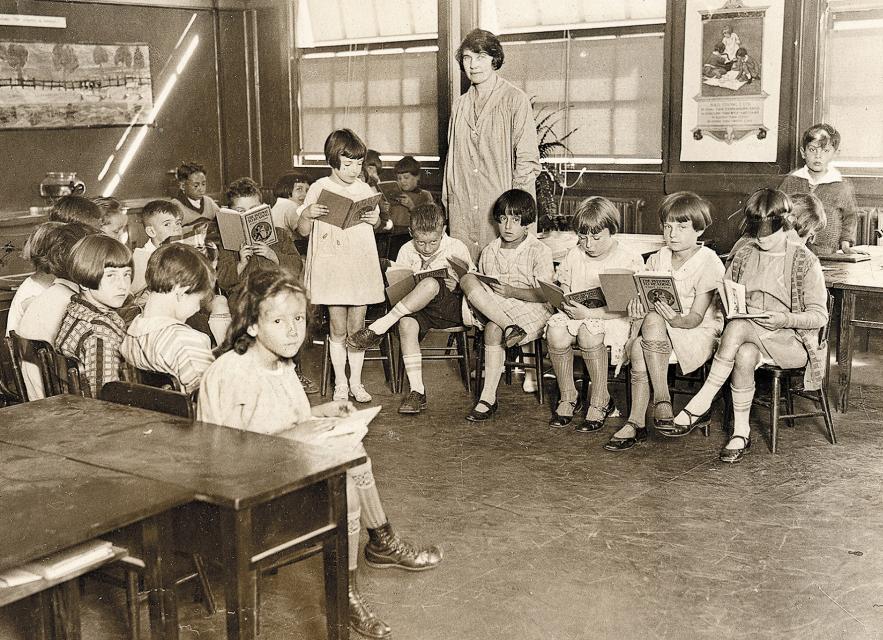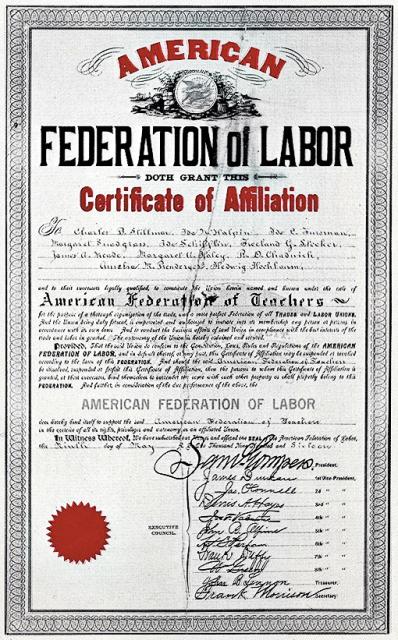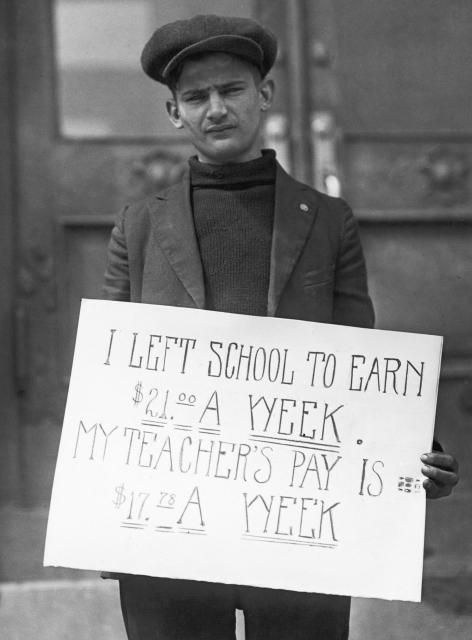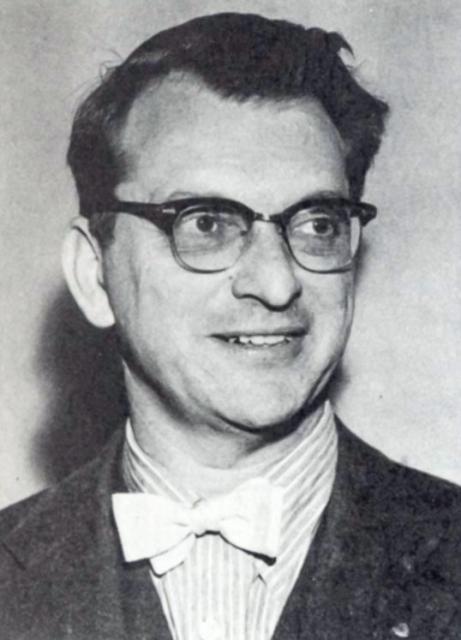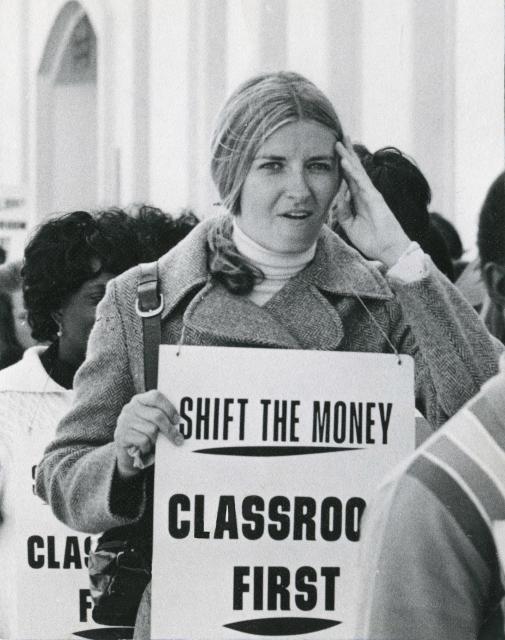History
Preface
The California Federation of Teachers, representing almost 60,000 educational employees served by CFT contracts throughout the state, is affiliated with the American Federation of Teachers (almost 800,000 members nationwide), the California Federation of Labor (7.4 million Californians), and the AFL-CIO (14.6 million members nationwide.) We have 24 service centers in California, a lobbying office in Sacramento, and a range of special services, from insurance and travel programs to sabbatical boards.
1920s: The Condition of the Teachers
Teachers suffered much more in the 1920s than they do today from the low social status accorded their work. Prompted by abysmal pay, the young American Federation of Teachers demanded a $2,000 minimum annual salary at the end of the decade, and a maximum “…which would provide a cultural real wage enabling the teachers to live according to the requirements of their position.” But low pay was just the beginning of the story leading to teacher unionism.
1930s: A “Debating Society” Struggles to Survive
If the previous ten years had been traumatic for teachers and their union, the early 30s proved nearly unbearable. Added to all their other problems was the minor difficulty of national economic collapse. More than a quarter of the nation’s population became unemployed in the years following the stock market crash of 1929.
1940s: The War and its Aftermath
The early years of the War decade found the CSFT struggling much as it had in the past, although with the benefit of hindsight we can see the first signs of change in the air. While for three years – 1941-44 – there was no official AFT state federation in California, local activities did not come to a halt. The labor movement was seemingly stronger than it had ever been. As a result of its militant pre-war organizing, more workers belonged to unions than at any point previously.
1950s: The Teachers Union that Came in From the Cold War
If the early 50s proved anything, it’s that the creation, preservation and extension of civil liberties of every generation have to be defended and won all over again by the next one. Heir to the Palmer Raids and Dies Committee witch hunts, McCarthyism scarred far more than teachers and their unions before it was through. For teachers in California, it defined the very atmosphere of the times, attempting and often succeeding in making any action out of the ordinary seem opposed to ‘freedom’, ‘democracy’ and ‘the American way of Life’.
1960s: Teacher Power
In May 1960 the United Federation of Teachers of New York City threatened to strike if the school board did not agree to hold a collective bargaining election for New York teachers. After months of stalling by the board, the teachers went out on a very successful one-day strike in November on Election Day’ This resulted in a June 1961 vote, overwhelmingly in favor of collective bargaining. The following December the teachers of New York voted decisively for the UFT against two rival organizations.
1970s: The Politics of Diversity
The struggle for collective bargaining took place against a backdrop of enormous teacher militancy; indeed, passage of the law finally came about after so many years precisely because of the pressure exerted on legislators by continuous teacher activism.
1980s: Teachers Unionism Comes of Age
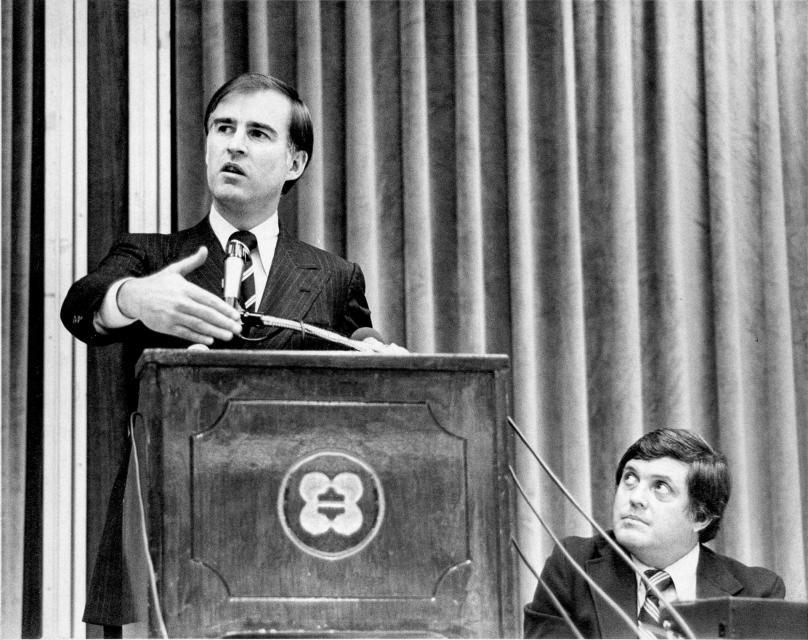 The social setting for teacher unionism in the 1980s
resembles its early years in the 1920s. Despite a superficial
prosperity, the gap between the haves and the have-nots widened,
and previous social commitments to helping people on the bottom
of society were eroded by those in power. Appeals to free market
ideologies allowed corporate interests to wield uncontrolled
command over the rest of society. Under the benign gaze of
Coolidge-Hoover/Reagan-Bush, regulatory agencies were undermined
or abolished; personal freedoms lost ground; corruption in high
places went unpunished; and organized labor weakened before
political and economic attacks.
The social setting for teacher unionism in the 1980s
resembles its early years in the 1920s. Despite a superficial
prosperity, the gap between the haves and the have-nots widened,
and previous social commitments to helping people on the bottom
of society were eroded by those in power. Appeals to free market
ideologies allowed corporate interests to wield uncontrolled
command over the rest of society. Under the benign gaze of
Coolidge-Hoover/Reagan-Bush, regulatory agencies were undermined
or abolished; personal freedoms lost ground; corruption in high
places went unpunished; and organized labor weakened before
political and economic attacks.

